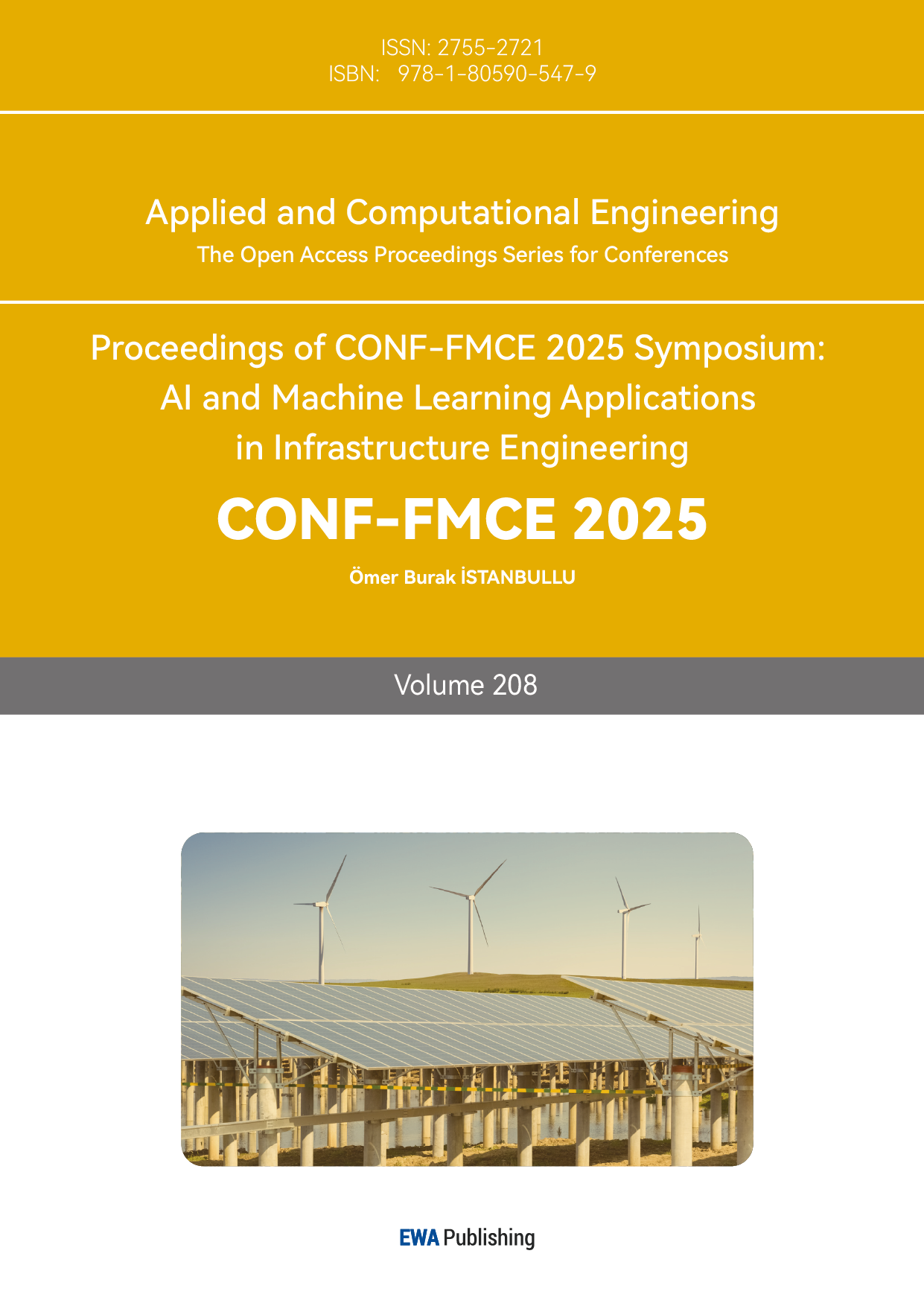References
[1]. Xin, M., Li, X., Stammerjohn, S. E., Cai, W., Zhu, J., Turner, J., Clem, K. R., Song, C., Wang, W., & Hou, Y. (2023). A broadscale shift in antarctic temperature trends. Climate Dynamics, 61(9–10), 4623–4641. https: //doi.org/10.1007/s00382-023-06825-4
[2]. Stammerjohn, S. E., Martinson, D. G., Smith, R. C., & Iannuzzi, R. A. (2008). Sea ice in the western Antarctic Peninsula region: Spatio-temporal variability from ecological and climate change perspectives. Deep Sea Research Part II: Topical Studies in Oceanography, 55(18–19), 2041–2058. https: //doi.org/10.1016/j.dsr2.2008.04.026
[3]. Turner, J., Marshall, G. J., Clem, K., Colwell, S., Phillips, T., & Lu, H. (2020). Antarctic temperature variability and change from station data. International Journal of Climatology, 40(6), 2986–3007.https: //doi.org/10.1002/joc.6378
[4]. Nicolas, J. P., & Bromwich, D. H. (2014). New Reconstruction of Antarctic Near-Surface Temperatures: Multidecadal Trends and Reliability of Global Reanalyses*, +. Journal of Climate, 27(21), 8070–8093.https: //doi.org/10.1175/JCLI-D-13-00733.1
[5]. Zhu, J., Xie, A., Qin, X., Wang, Y., Xu, B., & Wang, Y. (2021). An Assessment of ERA5 Reanalysis for Antarctic Near-Surface Air Temperature. Atmosphere, 12(2), 217.https: //doi.org/10.3390/atmos12020217
[6]. Mokhov, I. I., & Parfenova, M. R. (2021). Relationship of the Extent of Antarctic and Arctic Ice with Temperature Changes, 1979–2020. Doklady Earth Sciences, 496(1), 66–71.https: //doi.org/10.1134/S1028334X21010153
[7]. Smith, R. C., & Stammerjohn, S. E. (2001). Variations of surface air temperature and sea-ice extent in the western Antarctic Peninsula region. Annals of Glaciology, 33, 493–500. https: //doi.org/10.3189/172756401781818662
[8]. Turner, J., Lu, H., King, J., Marshall, G. J., Phillips, T., Bannister, D., & Colwell, S. (2021). Extreme Temperatures in the Antarctic. Journal of Climate, 34(7), 2653–2668.https: //doi.org/10.1175/JCLI-D-20-0538.1
[9]. Ma, Y., Bian, L., Xiao, C., Allison, I., & Zhou, X. (2010). Near surface climate of the traverse route from Zhongshan Station to Dome A, East Antarctica. Antarctic Science, 22(4), 443–459.https: //doi.org/10.1017/S0954102010000209
[10]. Turner, J., Colwell, S. R., Marshall, G. J., Lachlan-Cope, T. A., Carleton, A. M., Jones, P. D., Lagun, V., Reid, P. A., & Iagovkina, S. (2005). Antarctic climate change during the last 50 years. International Journal of Climatology, 25(3), 279–294. https: //doi.org/10.1002/joc.1130
[11]. Ångström, A. (1925). On Radiation and Climate. Geografiska Annaler, 7(1–2), 122–142. https: //doi.org/10.1080/20014422.1925.11881110
[12]. King, J. C. (1996). Longwave atmospheric radiation over Antarctica. Antarctic Science, 8(1), 105–109.https: //doi.org/10.1017/S0954102096000132
[13]. Zhang, T., Zhou, C., & Zheng, L. (2019). Analysis of the temporal–spatial changes in surface radiation budget over the Antarctic sea ice region. Science of The Total Environment, 666, 1134–1150.https: //doi.org/10.1016/j.scitotenv.2019.02.264
[14]. Van Den Broeke, M. R., & Van Lipzig, N. P. M. (2004). Changes in Antarctic temperature, wind and precipitation in response to the Antarctic Oscillation. Annals of Glaciology, 39, 119–126.https: //doi.org/10.3189/172756404781814654
[15]. Bitz, C. M., & Polvani, L. M. (2012). Antarctic climate response to stratospheric ozone depletion in a fine resolution ocean climate model. Geophysical Research Letters, 39(20), 2012GL053393.https: //doi.org/10.1029/2012GL053393
[16]. Scambos, T. A., Campbell, G. G., Pope, A., Haran, T., Muto, A., Lazzara, M., Reijmer, C. H., & Van Den Broeke, M. R. (2018). Ultralow Surface Temperatures in East Antarctica From Satellite Thermal Infrared Mapping: The Coldest Places on Earth. Geophysical Research Letters, 45(12), 6124–6133.https: //doi.org/10.1029/2018GL078133
[17]. Parish, T. R., & Bromwich, D. H. (1997). On the forcing of seasonal changes in surface pressure over Antarctica. Journal of Geophysical Research: Atmospheres, 102(D12), 13785–13792.https: //doi.org/10.1029/96JD02959
[18]. Zhang, C., & Li, S. (2023). Causes of the record-low Antarctic sea-ice in austral summer 2022. Atmospheric and Oceanic Science Letters, 16(6), 100353. https: //doi.org/10.1016/j.aosl.2023.100353
[19]. Parish, T. R., & Bromwich, D. H. (1998). A Case Study of Antarctic Katabatic Wind Interaction with Large-Scale Forcing. Monthly Weather Review, 126(1), 199–209. https: //doi.org/10.1175/1520-0493(1998)126< 0199: ACSOAK> 2.0.CO; 2



